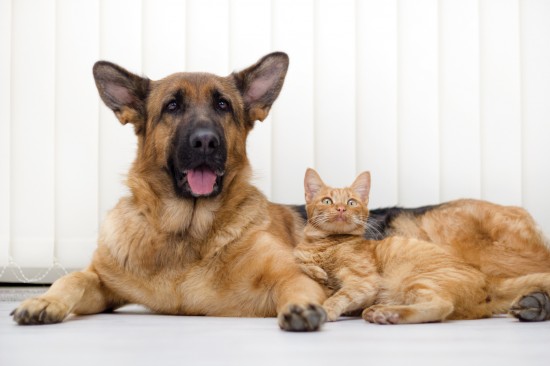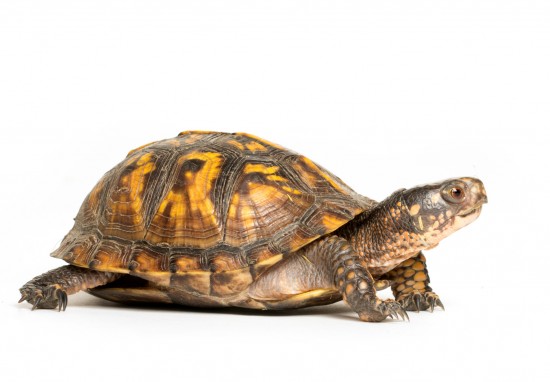If you're a loving pet parent, you know there are few things more disturbing than to watch your dog constantly scratch, or bite and chew on himself. And you also are probably aware that summertime is the height of the season for itchiness, "allergies," hot spots, and reactions to insect bites, especially fleas and grass allergies. In this column we'll talk about the early signs of skin disease, how to recognize them, and how to get rid of it before it becomes a more serious problem.
Fleas. Grass fungus. Grass seed and pollen. Ants. Mosquitoes. Bees. Scabies and mange mites. Ticks. Slivers and spiny things. Cuts and scratches. There are so many things that our furry friends can get into that we will never know about. For just one example, there are tiny pollen grains that are covered in sharp spikes. When these get into cracks in the pads of the foot, they can drive a dog insane with itching and stinging. Or they can be inhaled and create a different kind of allergic response. The list is endless.
You will not likely ever see whatever it was that caused the itching-scratching-chewing cycle in your dog. But there are many signs you can see that should alert you to the beginnings of a serious skin situation on your pet.
Any time a dog scratches himself, there's a good reason, and it's up to you to investigate. Check your dog carefully in and around the areas he's scratching. It can be something as simple as his collar is bothering him, or as ominous as the beginnings of a serious allergic response to something. Whenever a dog scratches, his nails can open the protective barrier of the skin and allow an infection to take hold. Whatever the cause, this is the time to nip it in the bud. The most effective treatment is prevention, and early detection is the key. Here are some things you can do at home.
First, ask your dog's permission to check his underbelly. Turn him on his back and begin your inspection at the genitals and the area where the rear legs join the body. The skin here should be almost white, depending on the color of the dog overall. It should look clean and pure, maybe even very slightly pink. Then check his legs at the joints for any irritations or hot spots forming. From there, turn him over and check his rump area near the tail, and work your way forward on the dog, combing the hair aside and looking closely at the skin underneath. Here are some early signs of trouble:
• There should be no red or rusty or black dots on the skin. These look like tiny pinpricks or blackheads, but are flat or flush with the skin. This may even look just like dirty skin. This first appears in the groin area, usually near the genitals. If you see this, you've already got a problem.
• Now check for black specks that look like pepper or small poppy seeds. These are tiny grains that are left behind by fleas. Flea "dirt" is actually excess blood (from your dog) consumed by the adult flea, passed as feces. (If you have any doubts about the source of this "dirt, place it on a damp paper towel. If you see red, it's definitely fleas.) If you see this, you must take immediate action to de-flea your dog and your house, and probably your car.
• Does your dog have "dandruff"? Crustiness or flakiness on the rump area is an early sign of skin disease. Dogs, like people, do not have excessive flakes if their skin is healthy. Correcting this problem also reduces people's allergic responses to your dog's dander.
• Look for any rash or red spot(s) or raw places. These are irritating to your pet and will likely get worse.
• Watch for thinning of hair or bare spots. On the back, near the tail, thinning is usually accompanied by crusty flakes, and can remain hidden for a long time if the dog is not groomed regularly. If you see bare patches on your dog's sides, this could be a condition known as bilateral alopecia, and you should visit your vet right away.
• Look for scratches, scabs, other superficial wounds. Keeping an infection out at the discovery stage is the most effective way to treat it.
Here are a few ideas about prevention:
• There has been much discussion in the literature about how to keep fleas away. It's critical to keep fleas off your dog and out of your household, but it's also crucial to do this in a safe and natural way. Flea collars and sprays contain harsh toxins, and can give rise to other serious conditions. Even the most natural flea chasers can be harmful in some ways. There is much debate about pyrethrins, garlic, Brewers yeast, diatomaceous earth, and more, many of which have been used safely for years, but every dog is different. We recommend that you read everything you can and make your best decision. We use certified organic aloe vera gel (not juice) from Lily of the Desert (available at GNC stores), combined with Rosemary Essential Oil as a topical rub to get rid of fleas and keep them off. But there's no simple solution if you have a major infestation.
• Hot spots: There's not much one can do to prevent this. Hot spots tend to spring up overnight, for a variety of reasons. It is essential to treat this immediately, before a bacterial infection sets in. Make sure the area stays dry, and that means you have to prevent your dog from licking the spot. We use our DERMagic hot spot lotion, which contains organic aloe vera gel, vitamin E, rosemary essential oil and florets of sulfur, and the hot spot disappears in a day or two. This combination of ingredients stops the itching, promotes rapid healing, and prevents or eliminates bacterial or fungal infection. We strongly recommend avoiding any steroids (cortisone, Prednisone), as these will do much more harm than good by compromising the immune system.
• Mange, scabies, mites: There are several varieties of mange, all caused by various types of mites. This condition can be difficult to diagnose, more difficult to treat, and can become terminal. The typical allopathic veterinary treatment is steroids to reduce inflammation, usually in the form of Prednisone. If your dog has a mite infestation, any steroid will make this worse. To prevent mites or mange, it's important to make sure your dog's immune system is functioning well, and that requires a healthy diet, a happy home, and an active lifestyle. Anything that causes a compromised immune system will allow all those critters that are already on the dog to now dig in and make a home under the skin.
• Allergies: Remember that an allergy is a reaction to an allergen. To treat an allergy, the thing that is causing the allergic response must be removed from the dog's environment. The result of an allergic response is often a failure of the immune system to protect the dog from infection, whether bacterial, fungal or yeast, and any skin infection must be treated with a topical application that eliminates this infection. Remember that cortisone or other steroids only address the symptoms, not the underlying infection.
If you discover, even with your best and most careful intentions, that your dog has a skin problem, it needs to be treated right away. There are many natural products on the market, but beware! The "natural" label is not regulated and can mean just about anything. Look for products with certified organic ingredients, and avoid products containing harsh chemicals. Read the labels. Go on the internet and find out what the ingredients are, where they come from and what the side effects might be.

 8 Tips Concerning The Nutritional Management Of Renal Dysfunction In Dogs & Cats
8 Tips Concerning
8 Tips Concerning The Nutritional Management Of Renal Dysfunction In Dogs & Cats
8 Tips Concerning
 Schutzhund Training Explained
Schutzhund Traini
Schutzhund Training Explained
Schutzhund Traini
 Turtles That Live On Land
Turtles That Live
Turtles That Live On Land
Turtles That Live
 Dog Boarding Manitoba - For Complete Care and Grooming
Dog Boarding Manitoba - For Complete Care and Grooming
Dog Boarding Manitoba - For Complete Care and Grooming
Dog Boarding Manitoba - For Complete Care and Grooming
 Can Feral Cats Really Be Tamed?
Can Feral Cats Re
Can Feral Cats Really Be Tamed?
Can Feral Cats Re